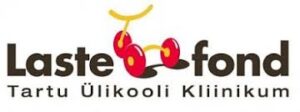About
The non-profit Tartu Women’s Shelter was founded on July 8th, 2002 and aims to help battered women (and their family members) and reduce the risk of repeated models of violence. On Nov 25th of that year the organisation opened its doors, becoming the first and only shelter in Estonia that focused on supporting women suffering from violence in their homes.
The shelter aims to create conditions for stopping the mechanisms of domestic violence, to enable rehabilitation and resocialisation of survivors and reduce the risk of repeated violence. The shelter offers the comprehesive assistance that is needed by women trying to break the cycle of domestic violence. This inclues a 24-hour hotline, a safe place for mental and physical recovery, psychological and legal assistance, information about violence-free alternatives, etc. The shelter also maintains close contact with other services and officials (e.g. the police, doctors, psychologists, psychiatrists) to broaden the services available to clients. WSIC has held over 200 Public lectures and trainings provided to: social workers in the city, police officers, medical providers, students etc.
Assistance is provided to clients based upon their particular circumstances, and roughly can be divided into three groups:
- Women who are staying – These are women who most likely will not exit their situation, for one reason or another, so that the focus is to provide support so that the client can help her partner change.
- Who who are prearing to leave – Many of our clients who should leave their partner are not able to do it the first time we provide assistance. In there case, our assistance helps build the courage to break free from the unhealthy relationship.
- Women looking to start a “new life” – For women who have decided that the situation cannot improve and they want to leave we provide all the assistnace possible in helping them make this transition. This includes emotional and psychological support to increase their coping skills as well as technical/material support such as finding housing, employment or applying for for available public subsidies.
Our organization recognized early on that for many women in abusive relationships, their freedom to communicate with us is limited – which is why we have developed a range of methods of communication. Along with the 24-hour hotline mentioned above, we also have developed a special web page (www.naistetugi.ee) that contains all kinds of relevant information about domestic violence and helping institutions. A third method is a discrete e-mail-counselling service that can be used (via info@naistetugi.ee ).
Awareness raising has also become a very important part of our work. The Women’s Shelter has organized several big public awareness raising campaigns, such as two big poster campaigns “When love hurts” (2003 and 2005) in Tartu. The workers of the shelter have also given numerous interviews for local radio and TV-stations, newspapers and popular magazines and written articles for various media channels.
To make best use of our limited resources, one of our approaches has been to make available good training materials and books on domestic violence by translating them into Estonian and publishing them on our web page as well as in printed form. To date we have published two great books: “Why does he do that? Inside the minds of angry and controlling men” by Lundy Bancroft, and “The batterer as parent” by Lundy Bancroft and Jay G. Silvermann. We have also translated the European Trauma Network webpage http://www.join-the-net.eu/website/index.php?id=269.






